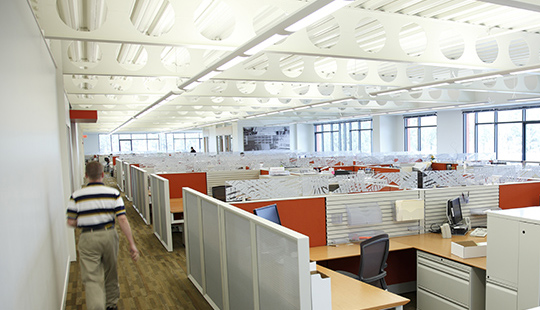
On-site lighting audits are a key part of the sales process that can help customers understand the scope of the project and ensure that end results meet their needs. Based on experience, here is a step-by-step guide to conducting an on-site lighting audit.
1. Upon arrival at the project site, check the following:
- Landscaping
- Dumpsters
- Presence of graffiti
These areas often influence a participant’s decision-making process for lighting upgrades.
2. Note exterior lighting sources and conditions on the way into the facility, such as:
- Is there adequate exterior lighting coverage?
- Is it high intensity discharge (HID)?
3. Take time to meet with the participant and ask questions.
- What is their motivation for completing this project?
- Energy savings/efficiency?
- Quality of lighting?
- Aesthetic improvement?
- Are there any areas that need higher light levels?
- Are there any areas that are too bright?
- Are there areas that are difficult to maintain?
4. Ask the participant to walk the site with you, so they can feel invested in the proposal as well.
Ask if they can take you to their lamp storage/supply area. Since you can’t see the part numbers of the lamps up in the poles or in the ceilings, you can often get part numbers from spare lamps and old lamps waiting for recycling.
If you enter an area with few or no occupants, this is a good time to ask about controls. Would they prefer these lights to remain on while no one is in the room/area, or would they like to include a proposed controls solution?
Identify and ask about daylighting. Is there an ample supply of daylight in this area, or would they like to include daylight harvesting options in the proposal?
Do they get complaints about lighting from their employees? Would it reduce the complaints if they were able to control each fixture in this area independently?
As a side note about Luminaire Level Lighting Controls (LLLC), participants can benefit from LLLCs that:
- Dim lights or turn them off automatically when there is no one in the space
- Dim lights when there is ample daylight in the space
- Provide individual control to provide employee comfort
- Set the maximum light level for each space to minimize glare
- Group lights into different zones
5. Other topics and considerations during the on-site audit include:
Have the participant help with counts. When the project is complete but there are extra uncounted fixtures, or a room is discovered that wasn’t included in your guided tour, it’s easier to get an approved change order if the participant led the facility tour and helped with fixture counts. This also adds credibility when they are comparing multiple proposals, each with a different count. They are more likely to trust a count in which they assisted.
Ask if they have a standard for lamp color temperature (CCT). When you see lamps outside of that standard, point out that this won’t be an issue once they are converted to LED in the standard CCT.
Collect a copy of the electric utility bill and pre-installation photos. Check voltages on the lighting circuits on the electrical panel. Exterior lighting is frequently 480 volts, and lighting fixtures come standard 120–277 volts.
Ask for a timeline. When would they like to see the project completed? Give them a realistic date when a decision must be made so you can meet their installation deadline. For example, if they want it done before October 31, work backward from that completion date based on how long each step normally takes, such as:
- October 1, begin installation
- July 1, order materials
- June 15, submit Energy Trust lighting tool, cut sheets, and photos
- June 10, receive participant approval
Make sure the customer understands and agrees to your estimated approval date. Using the example above, they must give you approval to proceed by June 10 to meet an October 31 installation deadline.
Ask about decision-makers. Who will review the proposal and what are the requirements for approval and funding? How many proposals will they receive?
Ask about storage, staging and disposal areas. Where can you store materials and equipment? Should you bring in a drop box for waste/recycling?
Ask about installation time. What times of day and days of the week are best for performing installation. Swing shift and weekends are more expensive.
Following these experience-based steps can help improve the process for trade allies and customers. If you have questions about conducting on-site lighting audits, please contact your account manager, or email us at lighting@energytrust.org.

